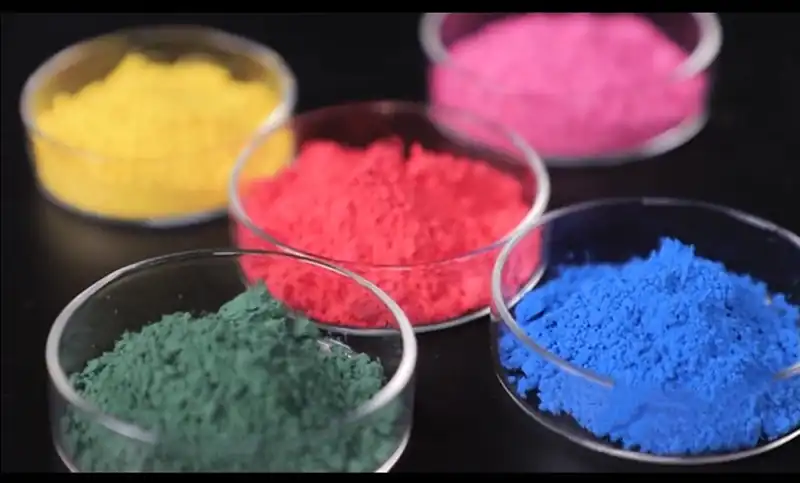Composite thermochromic pigments are materials that change color within a specific temperature range. This property makes them useful in various applications, such as temperature indicators, anti-counterfeiting labels, smart packaging, and artistic and decorative fields. Magnesium oxide (MgO) can play several important roles in this type of pigment:

- Stabilizer: Magnesium oxide has good chemical stability and can be added to composite thermochromic pigments as a stabilizer to improve the pigment’s weather resistance and chemical resistance. This helps ensure that the pigment maintains its performance under different environmental conditions.
- Carrier or Matrix Material: In some cases, magnesium oxide can be used as a carrier or matrix material for thermochromic pigments. It provides a stable structure to support other active ingredients and does not react adversely with these components.
- pH Regulation: Because magnesium oxide is alkaline, it can be used to adjust the pH of the composite pigment system. This is crucial for maintaining the color change characteristics of certain heat-sensitive compounds.
- Promotion of Phase Transitions: In some thermochromic systems, magnesium oxide may be involved in the phase transition process, where the internal structure of the material changes when the temperature reaches a certain threshold, resulting in a color change. The presence of magnesium oxide can help optimize this process, making the color transition more sensitive and smoother.
- Enhanced Thermal Conductivity: Magnesium oxide has a certain degree of thermal conductivity, which can help quickly transfer heat in composite thermochromic pigments, ensuring that color changes respond quickly and accurately.
- Improved Processing Performance: Magnesium oxide can also improve the processing performance of composite pigments, such as fluidity, dispersibility, and mechanical strength. This is very important for the manufacturing process and the quality of the final product.
- Control of Particle Size and Morphology: By selecting different grades of magnesium oxide (such as nanoscale or microscale), the particle size distribution and morphology of the composite thermochromic pigment can be precisely controlled, which in turn affects its optical properties and color change effect.
For composite thermochromic pigments that use magnesium oxide as a component, it is very important to choose the appropriate magnesium oxide quality (including parameters such as purity, particle size, specific surface area, etc.) because it will directly affect the performance of the final product. In addition, depending on the specific application requirements, surface treatment or other modification measures may be taken on magnesium oxide to further enhance its role in composite thermochromic pigments. If you are considering developing or using composite thermochromic pigments containing magnesium oxide, it is recommended to consult with professionals at Messi Biology to obtain the most suitable technical support and product recommendations for your application.
